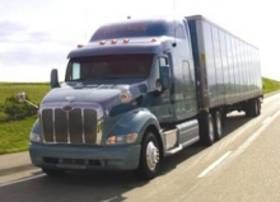Left And Right Turns
Topic 32929 | Page 2

All of the information provided to you is great, so I am going to touch on something that hasn't been addressed yet.
You said that you have been told that you need to work on turns. Ok, when you ask how you are doing on something and the answer is for you to work on something, follow that up by asking for specifics. Let the person know that you want to get better and that you would appreciate being told what things you can do in order to get better in the areas where you need the most improvement. Do this when you begin training out on the road after getting your license. The person who is seeing you operate the vehicle is best able to advise how to improve.
Will do! If I do fail, I do get an extension, so I'll ask for sure.
Learning how to coax information out of the instructors by asking the right questions is a skill that you will use in everyday life on the truck. Be it at a shipper , from your dispatch. Etc. Everything revolves around communication. Questions like "what part of the turn do I need address?" Or "am I starting too late or early?" Will help pinpoint issues.
My company treats us very much like the way we Gen Xers were raised...You're on your own and it's up to you to figure it out. A closed mouth doesn't get fed.
Fwiw as was said. Hitting a curb is an automatic fail. We were taught to begin turning when your shoulder is even with where you want your tandems to end up on the street your turning onto for a right. For a left, shoulder even with the middle lane paint (double yellow) or past center of the median. In both right and left turns, a quick two count while you're at the far point of your arc.
During my test, I swung wide on an intersection and did have a 4 wheeler try and come up the inside. I closed it off quickly. I got dinged a few points for it. It happens sometimes but it's not as bad as plowing over a curb. Still though something to watch for. There's a happy medium where you want your tandems and end of trailer to be at.
Shipper:
The customer who is shipping the freight. This is where the driver will pick up a load and then deliver it to the receiver or consignee.
Tandems:
Tandem Axles
A set of axles spaced close together, legally defined as more than 40 and less than 96 inches apart by the USDOT. Drivers tend to refer to the tandem axles on their trailer as just "tandems". You might hear a driver say, "I'm 400 pounds overweight on my tandems", referring to his trailer tandems, not his tractor tandems. Tractor tandems are generally just referred to as "drives" which is short for "drive axles".
Tandem:
Tandem Axles
A set of axles spaced close together, legally defined as more than 40 and less than 96 inches apart by the USDOT. Drivers tend to refer to the tandem axles on their trailer as just "tandems". You might hear a driver say, "I'm 400 pounds overweight on my tandems", referring to his trailer tandems, not his tractor tandems. Tractor tandems are generally just referred to as "drives" which is short for "drive axles".
OWI:
Operating While Intoxicated
New Reply:
New! Check out our help videos for a better understanding of our forum features

















Preview:








 TT On Facebook
TT On Facebook
Thank you!!
CDL:
Commercial Driver's License (CDL)
A CDL is required to drive any of the following vehicles:
Tandems:
Tandem Axles
A set of axles spaced close together, legally defined as more than 40 and less than 96 inches apart by the USDOT. Drivers tend to refer to the tandem axles on their trailer as just "tandems". You might hear a driver say, "I'm 400 pounds overweight on my tandems", referring to his trailer tandems, not his tractor tandems. Tractor tandems are generally just referred to as "drives" which is short for "drive axles".
Tandem:
Tandem Axles
A set of axles spaced close together, legally defined as more than 40 and less than 96 inches apart by the USDOT. Drivers tend to refer to the tandem axles on their trailer as just "tandems". You might hear a driver say, "I'm 400 pounds overweight on my tandems", referring to his trailer tandems, not his tractor tandems. Tractor tandems are generally just referred to as "drives" which is short for "drive axles".